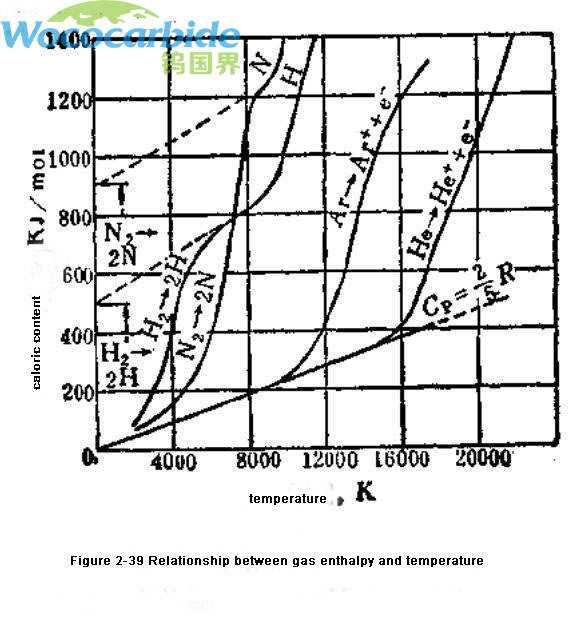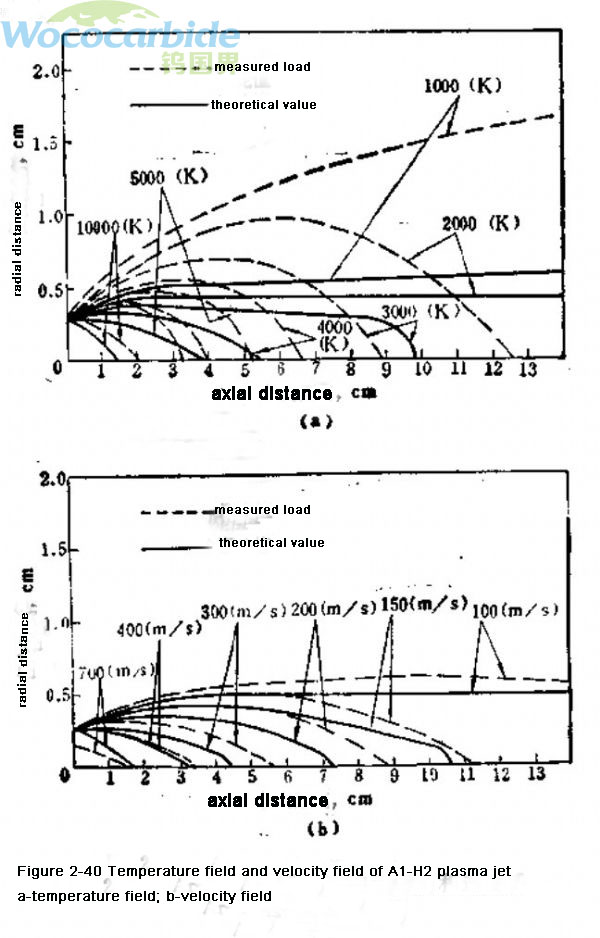

current position:Information and data>Plasma spray jet temperature and velocity
The temperature and velocity changes (temperature field and velocity field) of the plasma jet in the axial and radial directions directly affect the temperature of the sprayed powder heated in the jet and the flying speed of the particles, thus affecting the coating quality.
The temperature of the plasma jet at the nozzle outlet can be calculated theoretically or measured experimentally. The principle of theoretical calculation is.
The energy Pi of the plasma jet is the input energy P (electric power) of the spray gun minus the energy Pw consumed by the temperature rise of the cooling water of the spray gun, as shown in formula (1):
Pi = P - Pw (1)
Pw depends on the thermal efficiency of the spray gun, which is generally about 50% of the input energy of the spray gun. For different spray guns, it can be measured experimentally under the actual operating power.
The temperature of the plasma jet depends on the enthalpy of the gas, as shown in Figure 2-39.
The thermal baking Hv of the plasma (the heat per unit volume of the plasma) depends on the energy Pi of the plasma jet. In the case of ignoring the kinetic energy, the relationship with the volume flow Qv of the gas in the standard state is as shown in formula (2) shown:
Hv = Pi/Qv (2)
From the formula (1) and formula (2), the heat of the plasma gas Hi can be calculated, and then according to the relationship between the heat of the gas and the temperature (Figure 2-39), the temperature Ti of the plasma can be calculated.

After calculating the temperature of the plasma gas, taking into account the volume expansion of the gas, the velocity of the jet can be calculated. The atmospheric pressure at the nozzle outlet is 1 atmosphere, and when the nozzle outlet area is S, the jet velocity is shown in formula (3):
vi = QvTi/293S (3)
From the nozzle outlet, the temperature field and velocity field of the jet are affected by many factors, such as viscosity, compressibility, heat conduction, heat radiation, etc., and the calculation is more complicated. As an example, the results of theoretical calculation and experimental determination are shown in Fig. 2-40.
It can be seen from Figure 2-40 that along the plasma jet flow direction, with the increase of the axial and radial distances, the temperature and velocity of the jet drop rapidly.
Hot information

